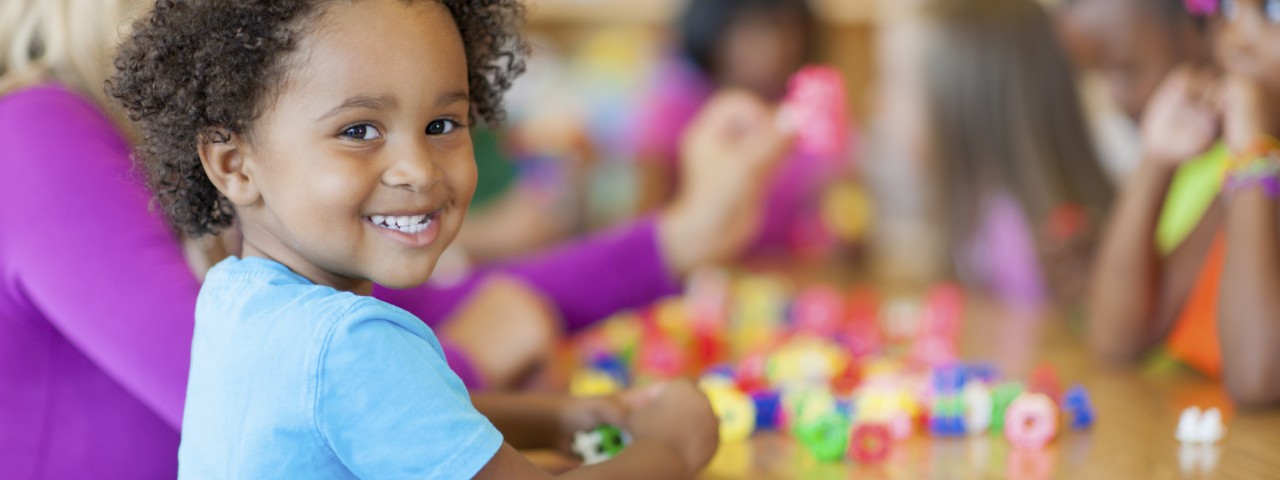Kindergarten Readiness Differences Appear Early
- Tweet

This article is part 2 to Kindergarten Requires Flexible Plans For Teachers
From the very first week of school, kindergarten teachers noticed differing levels of preparedness among their students. Now, nearly three months into the school year, the contrast is stark.
“It’s very polarized in the classroom, between the ‘ready’ and the ‘not ready’ group,” says the teacher in the achievement district we spoke with last month. “Those that are kindergarten ready are on a whole different level than the kids who still need to know the basics, like letter names and numbers.”
Kindergarten Readiness Doesn’t Just Happen
While the teacher must deal with the practical problems posed by varying levels of readiness in the classroom, the members of the UCI policy team have been working for the last three years to determine some of the reasons behind these differences. Although the data of this year’s study is still being analyzed, the conclusions of last year’s survey are now in.
Social Capital Matters
Last year’s study sought to determine how the amount of social capital in a neighborhood influences a student’s kindergarten readiness. Social capital, which can be a nebulous term, was formally defined in this study as “the informal support structures immediately surrounding a family,” according to Pete Albrecht, a member of the policy team.
To determine the presence of such structures, the study administered surveys to parents that asked questions such as: Can you trust your neighbor? If your car broke down, could you call somebody to pick you up? If you go out of town, are there trustworthy adults you could leave with your children?
More Neighborhood Support = More “Ready”
Ultimately, research indicated an indirect but clear relationship between social capital and kindergarten readiness: higher levels of social capital produced higher levels of early reading habits, which then produced more kindergarten ready children.
But what does trusting your neighbor have to do with a child’s readiness for school?
“The greater point here is that everyone, especially parents, is really busy,” says Pete. “So for every moment spent fixing life’s unexpected problems…that’s another moment that a single parent or a really busy family isn’t focusing on their child. But when you have these informal resources, you can rely on a neighbor to pick up some of the slack, for example.”
By simply having such a reliable and trustworthy neighbor, parents are afforded the relief of knowing their child is with a responsible adult should an emergency arise, while the child herself benefits from a more stimulating environment than the television could provide. From a financial perspective too, the power of social capital is particularly noteworthy.
“Social capital doesn’t necessarily cost money,” says Pete. “It’s something that a neighborhood can foster itself, and doesn’t require government initiatives or third-party interventions or support.”
How Can We Build Social Capital?
The next question, especially for the UCI team focused on the policy implications of such research, is how to help increase social capital within neighborhoods. One idea, gaining traction across the country, is to strengthen a certain trusted and publicly available institution (such as a church or community center) within a neighborhood to serve as a central area of support where people could go for medical advice, information on how to raise their kids, resources to help them do so, etc. The purpose would not be to bring in outsiders to tell those in the neighborhood how to live, but to strengthen the existing nodes of support within that community. This idea, although it may take time to set in motion (if at all), is garnering more attention as the importance of strong neighborhoods in the lives of children becomes clearer.
For now, we can be encouraged by the findings from last year’s survey of new kindergarten parents, which show that increasing a child’s readiness for kindergarten doesn’t have to be expensive, and can be as simple as strengthening relationships among neighbors.
